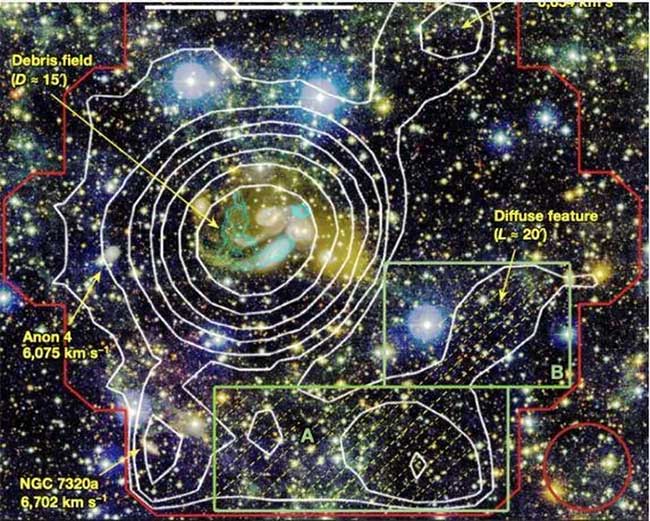An International Research Team Led by Chinese Scientists Discovers the Largest Cosmic Cloud in the Universe.
This astonishing discovery could help researchers gain a better understanding of the origins of galaxies.

The scientists discovered the enormous cosmic cloud by directing a powerful radio telescope towards Stephan’s Quintet, a famous group of galaxies – (Photo: Handout)
According to an article published in Nature on October 19, the cloud is composed of hydrogen atoms, spans approximately 2 million light-years across, and is 20 times larger than our Milky Way galaxy. One light-year is about 9.46 trillion kilometers (5.88 trillion miles).
This discovery was made possible with the help of a powerful telescope located in Guizhou Province, southwest China. Astronomers from China, Europe, and the United States found the cloud after directing the Five-hundred-meter Aperture Spherical Telescope (FAST) – the world’s largest single-dish radio telescope – towards a group of galaxies known as Stephan’s Quintet.
The lead author Xu Cong from the National Astronomical Observatories of the Chinese Academy of Sciences in Beijing stated: “Since its discovery 145 years ago, Stephan’s Quintet has been extensively studied by many ground-based and space telescopes.”
High-powered telescopes have captured stunning views of Stephan’s Quintet. For instance, NASA’s James Webb Space Telescope has observed one of the galaxies colliding with another at high speed, creating a large shock wave.
Xu Cong’s team aimed to use the unparalleled sensitivity of FAST to gain a deeper understanding of how galaxies interact as they come together to form a group for the first time.
To achieve this, they searched for hydrogen atoms in the vicinity of Stephan’s Quintet. These atoms emit a unique “signature” radiation that can reveal information about events that occurred long ago.
This was a challenging task due to the weak signals from the atoms and the vast area being observed, but FAST’s finely tuned receiver and its gigantic dish, equivalent in size to 30 football fields, made it possible, Xu said in an interview.

The location of the giant atomic gas cloud, shown in boxes A and B, is unusual because it is relatively far from the center of Stephan’s Quintet – (Photo: Handout)
The researchers were surprised to find a massive gas structure emerging from the data. It is at least twice as large and has a lower density than any previously detected atomic cloud.
The cloud’s location is also unusual as it is relatively distant from the center of Stephan’s Quintet. Xu Cong noted that most hydrogen atoms are found within or near a galaxy because they are the building blocks of those galaxies and are continuously combined under gravitational forces to form molecules and ultimately stars.
“In fact, the giant cloud may have been there for billions of years,” he said.
“We wonder why it still exists, as atomic gas with low density should have been destroyed by ultraviolet radiation in the cosmic background, according to current theories,” Xu Cong remarked.
This discovery may imply that other massive gas structures are lurking elsewhere in the universe and can only be observed with powerful radio telescopes like FAST, the article noted.
Their unexpected finding will support numerical simulations to explain how Stephan’s Quintet formed and inspire future observations to gain a better understanding of the origins of galaxies and other celestial bodies, Xu Cong stated.





















































